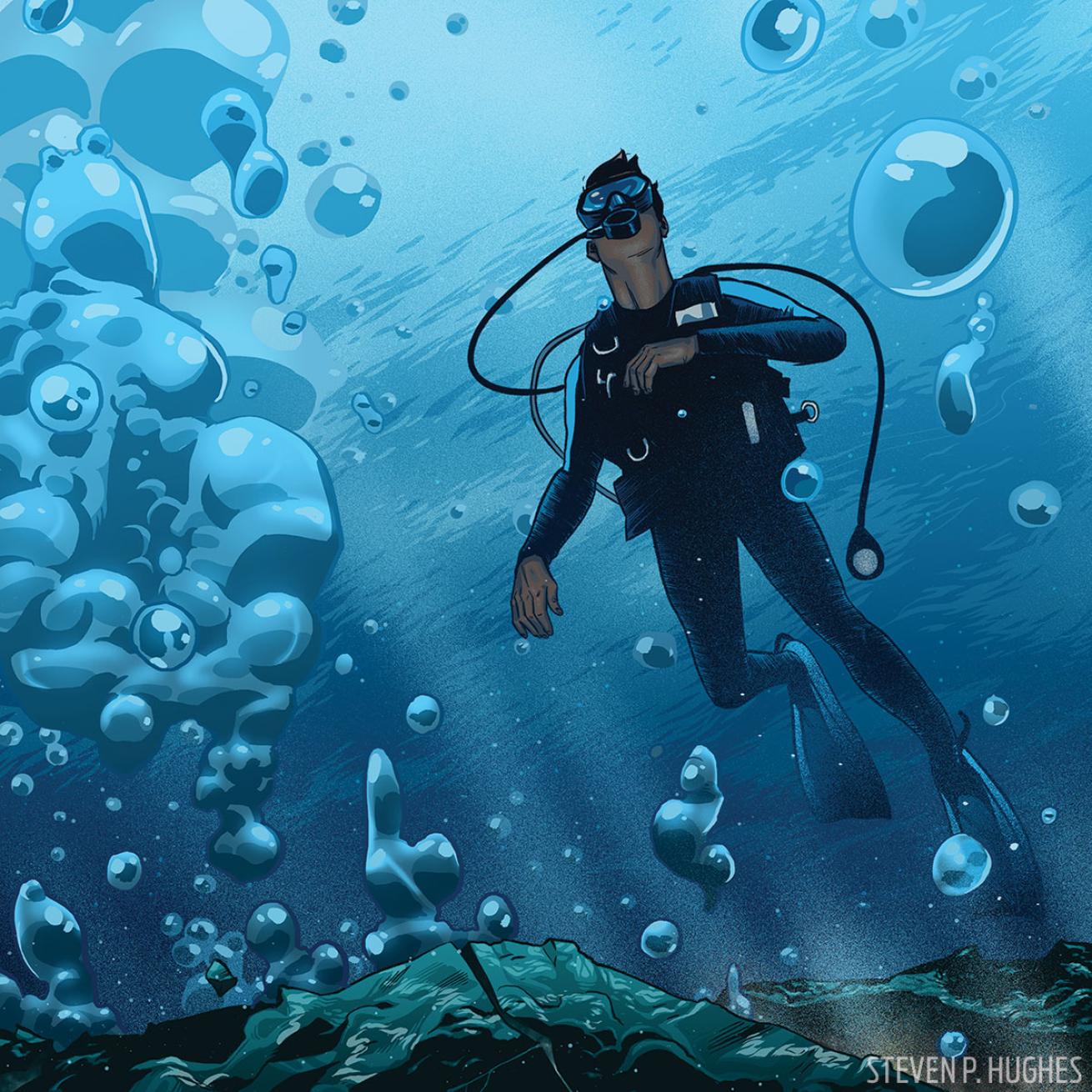What It's Like To Scuba Dive Next to an Active Volcano

Steven P. Hughes
Trial By Fire
Every time divers visit they witness some kind of volcanic activity.
The volcano spews ash and cinder way up into the sky for 15 minutes. Every time we visit Barren Island — near India’s Andaman and Nicobar islands — we see some kind of volcanic activity as we drop anchor from the liveaboard M/Y Infiniti. It’s exciting to have a live volcano just a few hundred yards away, and the Zodiacs take us even closer to dive it.
The island has steep cliffs and, underwater, the sheer drop-offs plunge very deep. The bottom of most dive sites is solidified lava and, in places, looks like someone took a sledgehammer to it. This basalt rock formed 1.8 million years ago, when lava flowed into the ocean; now its cracks and fissures erupt with bubbles streaming toward the surface.
The formations are abrupt; it’s as if a chisel has cut the rocks at 90 degrees, like columns. Heated by the volcano, the water is 99 degrees F and so rich in nutrients that giant manta rays commonly feed here. We’ve also seen hundreds of dolphins at a time, on the hunt for local tuna.
And the corals! Barren Island’s reefs haven’t been affected by El Niño or global warming because they’ve already adapted to warmer water temperatures, so diving by the volcano reveals a kaleidoscope of healthy corals.
At a site called Purple Haze (yes, named after the Jimi Hendrix song), the whole seafloor is covered with gardens of thriving purple corals. Staghorn corals flourish as well, growing to incredible shapes and sizes.
It’s a magical place, but one that requires precautions. Our crew members maintain a 24-hour watch on the crater. If the volcano ever started erupting, I imagine we would have to get out of there quick.
Learn more and go dive it yourself!










